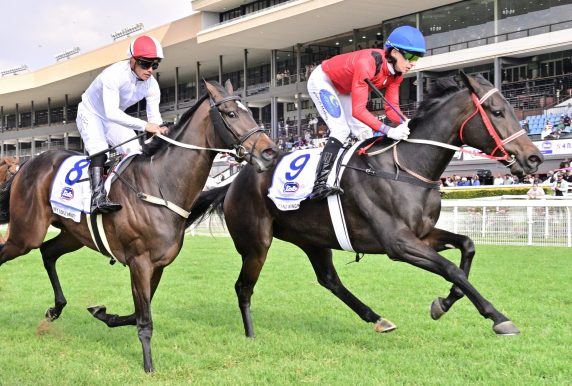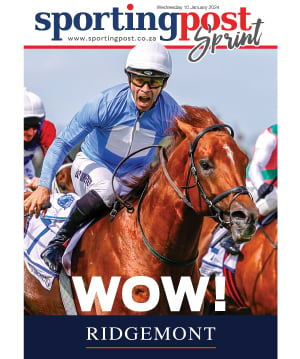In 1997, shortly after Hong Kong had agreed to follow Europe’s example by allowing direct imports from South Africa, Alec Laird travelled to Sha Tin racecourse with his South African-bred champion London News to win the G2 QEII Cup (now Group 1).
The South African Thoroughbred industry’s impact on the international stage snowballed remarkably quickly from that memorable starting point, with high profile successes being enjoyed in most parts of the racing world, none more so than in Dubai, whose International Carnival provided conditions perfectly suited to the tough, hard-knocking South African-breds.
Whilst the likes of Ipi Tombe (Manshood), Irridescence (Caesour), Jay Peg (Camden Park), Perfect Promise (Caesour), Crimson Palace (Elliodor), Lizard’s Desire (Lizard Island), Gypsy’s Warning (Caesour) and JJ The Jet Plane (Jet Master), to name a few, helped keep flying the South African flag, it belied the tremendous difficulties in moving these high-class athletes to their international destinations, conditions that would have put off many other horsemen. This is borne out by the dismal market share South Africa enjoys, estimated to be less than a quarter of 1% of the global horse export business.
A snapshot of current export numbers reveals the following: Hong Kong, 5 South African-breds registered; Singapore 22; the UAE 13; the U.S. two. And, in most other racing jurisdictions, there is no South African representation at all–this despite the fact that the South African Thoroughbred racehorse trades at approximately 20% of the global average.
So what’s the problem?
.
African horse sickness (AHS)
This non-contagious, vector borne virus made international headlines in the late 1950’s when an outbreak occurred in the Middle East and led to the embargo on horse exports from Africa which was deemed to be infected with the disease. The exception was the USA, whose quarantine philosophy differed fundamentally from other parts of the world, and they continued to allow the importation of horses from Africa on condition they were locked up in a vector-protected facility in New York State for 60 days post arrival. On this basis, a trickle of South African horses made their way to the USA over the next four decades, including the top class Colorado King, Bold Tropic, Hawaii, Wolf Power and eventually in 1995, arguably South Africa’s greatest racehorse, the mighty Horse Chestnut (Fort Wood).
By then, however, the South African equestrian community had gathered to seriously look at the international veterinary regulations, and the process of negotiating the South African horse export protocol started. Based on the principles outlined in the prevailing OIE (World Organisation for Animal Health) AHS Code, the protocol allowed the export of horses from South Africa’s AHS Free Zone in Cape Town and was ratified by the European Commission early in 1997.
The protocol required that surveillance proved that the AHS Controlled Area in the Western Cape had been free of AHS for a period of two years, that horses spend 60 days in the AHS Free Zone, the last 40 of which under vector-protected conditions, and that horses tested negative for AHS (ELISA) and various other equine diseases.
The 36-stable Kenilworth Quarantine Station was developed in 2003, and its design ensured that positive pressure was maintained throughout, the net outflow of air preventing the culicoides midge from entering the stables. A world leader in its field, Kenilworth Quarantine Station had safely quarantined close to 1,000 horses by the time of the last outbreak of AHS in the Control Area in February 2011 which, led to the automatic suspension of horse exports from South Africa, for 12 months according to the guidelines in the 2008 AHS Code (reduced from 24 months in the earlier version And, in the context of Southern Africa, herein lies the single biggest flaw in the protocol, its failure to recognise the seasonality of AHS. South African tourist brochures might paint a picture of glorious beaches and endless sunshine, but it belies the fact that most parts of the country are bitterly cold during the long winter months, many stations presenting temps well below freezing, typically from May to October. This effectively kills off the culicoides midge or suppresses its breeding cycle and, therefore, provides an annual, natural window where the risk of infection disappears and consequently eliminates the risk of introducing AHS to importing countries.
The OIE provides guidelines to promote trade in animals or animal products on the basis of well researched risk profiles of dangerous diseases.
However, the “one size fits all” model clearly has its limitations, and ndividual or regional interpretation of the various Code Chapters is the only way to sensibly agree on systems that promotes healthy trade between countries.
South Africa presently finds itself in a state of nervous optimism as new veterinary regulations are being considered by the OIE, and a new diagnostic test for AHS which gives a “yes or no” answer in a couple of hours is in the final stages of development. Both platforms will enhance South Africa’s ability to negotiate improved conditions for export and allow our horses the chance to participate in and enhance the sport of horseracing in other parts of the world.
Last year’s suspension prevented Mike de Kock from taking his “A” Team to Dubai for this year’s International Carnival. Yes, he could have shipped them via Mauritius and Europe, but the risk of a 140-day journey was too much, and the master trainer made his position quite clear after his outstanding daughter of Galileo, Igugu, had won the 2011 G1 Vodacom Durban July. From a local perspective, this meant that South African racing fans were able to enjoy Igugu’s G1 J&B Met victory and many other notable performances of South Africa’s current crop of outstanding talent. These included Val De Ra (Var), What A Winter Western Winter), Variety Club (Var), Jackson (Dynasty) and Gimmethegreenlight (More Than Ready) to name a few, all of which are world-class performers in waiting.
In respect of the last mentioned, Gimmethegreenlight, is the inaugural South African invitee to qualify for the Breeders Cup “Win and You’re In,” and negotiations are under way to find a way to get the colt to Santa Anita in good shape. This will require USDA approval of the principles of the OIE AHS Code which would allow Gimmethegreenlight to complete his pre-export quarantine in his home environment and remain in training throughout as enjoyed by other visiting contenders. To accept anything less would be an injustice to both horse and connections.
–Peter Gibson
CEO, Racing South Africa







